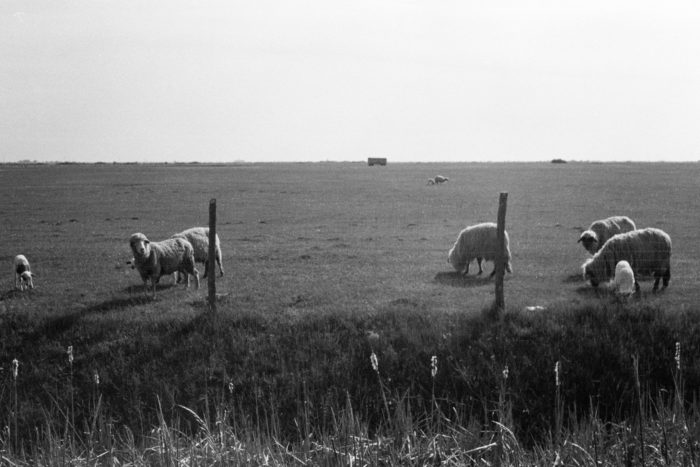
The plain truth is that our food system is deeply fragmented and unsustainable. It was built on the principles of mass production, commodification, and working against nature. We continue to pump out processed foods, keeping up with the stark reality that healthy, whole foods are simply unattainable for many communities (millions of Americans are living in food deserts). Industrial agriculture is still supported over local and diversified farms who follow regenerative practices. In the last few years, the fragility of our current system has only become more apparent, but so too have the various ways to fix it. Legislation like the farm bill greatly effect human health and our ability to survive in a changing climate. We spoke with Erica Campbell, Policy Director at Kiss the Ground (whose film awakened many people in 2020) about the importance of this year’s bill and how to support it. —Charlotte DeFazio
Why is the farm bill so important?
The farm bill is one of the most important pieces of federal legislation that impacts us every day, but very few people know about it. It costs about $100 billion per year, impacting how food and agriculture goods are produced, distributed, marketed, and accessed. It includes everything from supplemental nutrition programs to farm subsidies. Unfortunately, many of these subsidies are paid to large-scale commodity farms, resulting in land that continues to be heavily degraded; processed food being more available and cheaper than healthy, whole foods; and industrial agriculture being more supported than diversified, regenerative, and regional food systems.

What are the main differences between this year’s bill and the 2018 bill?
We are now in the 118th Congress, where the Senate is controlled by the Democrats and the House controlled by the GOP, with a Democratic President. The last farm bill was signed in December 2018 with both chambers controlled by the Republicans and a Republican President. While farm bills are typically a bipartisan process, this one is likely to be more bipartisan but also accommodate more Democratic priorities.
In the last five years we have seen a big shift in how Congress and the general public view agriculture as a solution to climate change. For years, the predominant view has been that agriculture causes environmental degradation, and the focus has been on helping farmers and ranchers cause less pollution; but in fact, they can play a major role in flighting climate change through regenerative practices that improve soil and ecosystems. That said, while we are seeing this change in perspective, we still have a long way to go. Currently, only 7% of the farm bill goes toward conservation programs. The Inflation Reduction Act (IRA) provided a historic investment of $20 billion for conservation programs with the implicit purpose of utilizing agriculture to address climate change. This funding could go a long way toward helping more farms transition to regenerative practices and improve soil health.
The pandemic also made painstakingly clear that our food system is too consolidated and far too fragile. The public wants to see more resilient, stronger local and regional food systems to address food insecurity and increase access to healthy, nutrient dense food. We are now seeing more bipartisan interest in developing regional processing and distribution infrastructure as well as community food projects, and I think we will see a lot more support for this in the 2023 Farm Bill.

What have been the biggest setbacks or the most common oppositional responses?
The biggest debate during each farm bill is over nutritional spending for SNAP and other programs, which takes up at least 75% of all farm bill spending. But another major obstacle we are currently facing is that the IRA (Inflation Reduction Act) was a Budget Reconciliation bill that was not bipartisan. Because of that, many GOP Congressional members want to see the funding for conservation be diverted into subsidizing industrial commodities or other priorities.

Where do things currently stand?
The 2018 Farm Bill expires at the end of September this year, and the agriculture committees in both chambers want to see this deadline met. However, given the debt limit debate, it’s expected that there will be an agreed-upon extension of the current bill with the hopes that the 2023 Farm Bill will pass by the end of the year. The Senate Ag Committee had a March 31 deadline for Senate offices to give them their farm bill proposals, which was also their deadline for public input. They expect to have a base text ready by late June. We have not heard when a similar deadline will be given to House offices, but we expect it to be sometime in May. If you plan to do any advocacy for this year’s farm bill, I’d consider calling or writing to your representatives as soon as possible.

What else can people do to help?
There are many ways people can advocate for a better farm bill! One way is to connect with a coalition like Regenerate America that provides easy options for getting involved. First, you can sign the petition and become a Regenerate America supporter. You will then get a specific call-to-action once or twice per month. For example, in March we asked our supporters to write to their Senators about regenerative agriculture, and 98 offices were contacted—that is real people power! We try to make this very easy for people—usually in a click or two you can take meaningful action.













